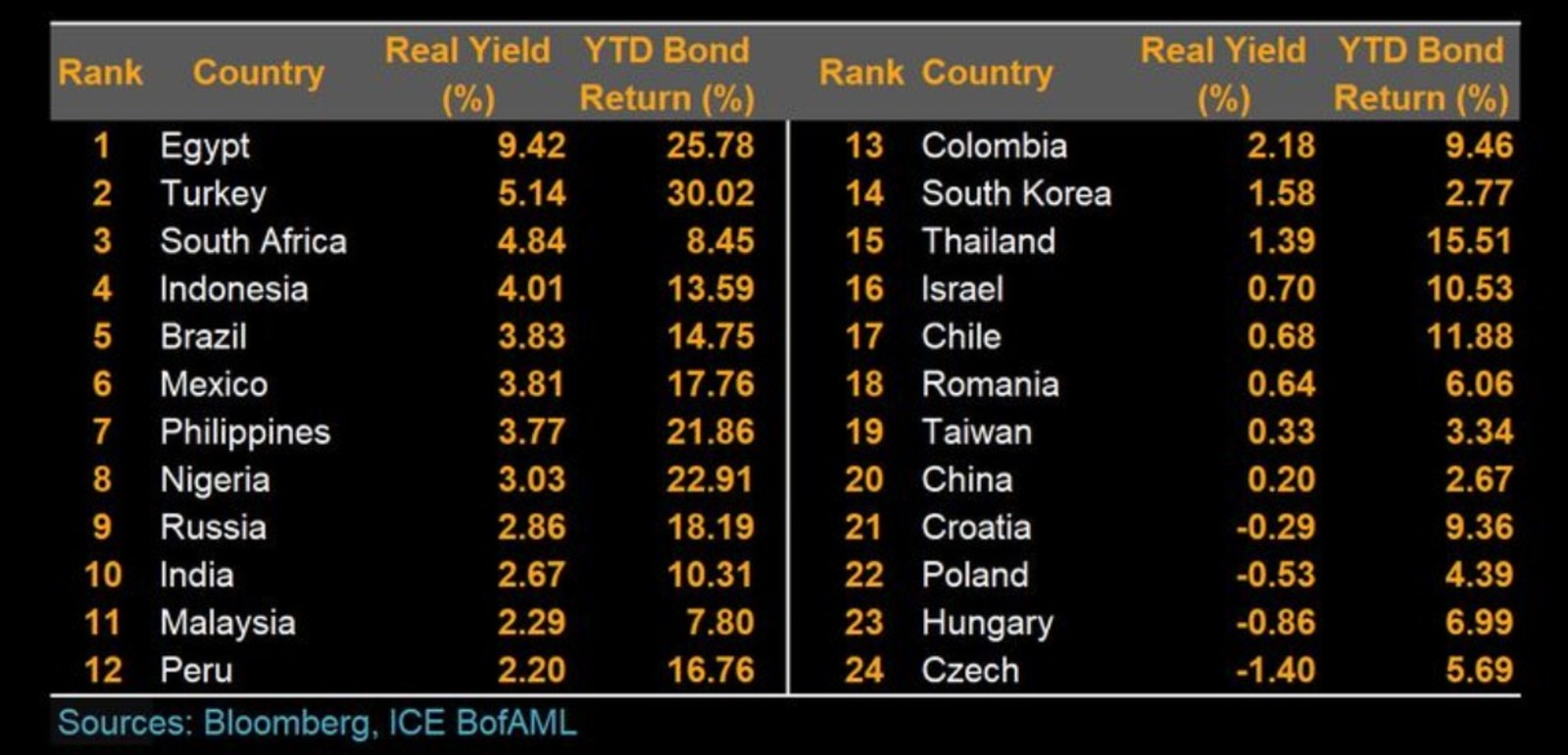Attractive bond real yield rates are drawing investors to Egypt

With inflation dipping again, Egypt’s real yield is still attractive to EM bond investors: Egypt is among the world’s most promising markets when it comes to the real interest rate on our bonds, topping an index for inflation-adjusted returns with a real yield of 9.42%, Bloomberg reports. According to the Bloomberg Barclays Local Currency Government Universal Index, our real yield is significantly higher than Turkey, number two on the list at 5.14%, and South Africa, which comes in third at 4.84%. Egypt’s YTD bond return rate is also among the highest on the index, at 25.78% — second only to Turkey’s rate of 30.02%.
Emerging market returns are increasing, while those in developed markets are at a low: Inflation-adjusted bond yields in developed markets are close to the lowest level they’ve been since 1997, Bloomberg says. In the last three months, emerging market bonds have gained 1.7%, spurred by optimism over a prospective trade agreement between the US and China, while developed markets have lost 1%. Egypt’s local currency sovereign debt has climbed by 0.4% last week alone, while Turkey’s is up nearly 1% and South Africa’s is up 0.9%. Slowing inflation in emerging markets has also boosted their attractiveness in terms of real yields, with extra real yields offered by emerging markets over developed markets standing at 302 bps in October — marking a five-fold increase from 2013. Fund manager Takeshi Yokouchi makes the case that now is the time to buy EM bonds “as inflation in many of the economies has slowed and more rate cuts are expected for some of them.”
What’s the difference between yields and “real” yields? To calculate a sovereign’s real rate of interest, the inflation rate is subtracted from the average monthly yield of 10-year local-currency sovereign debt.